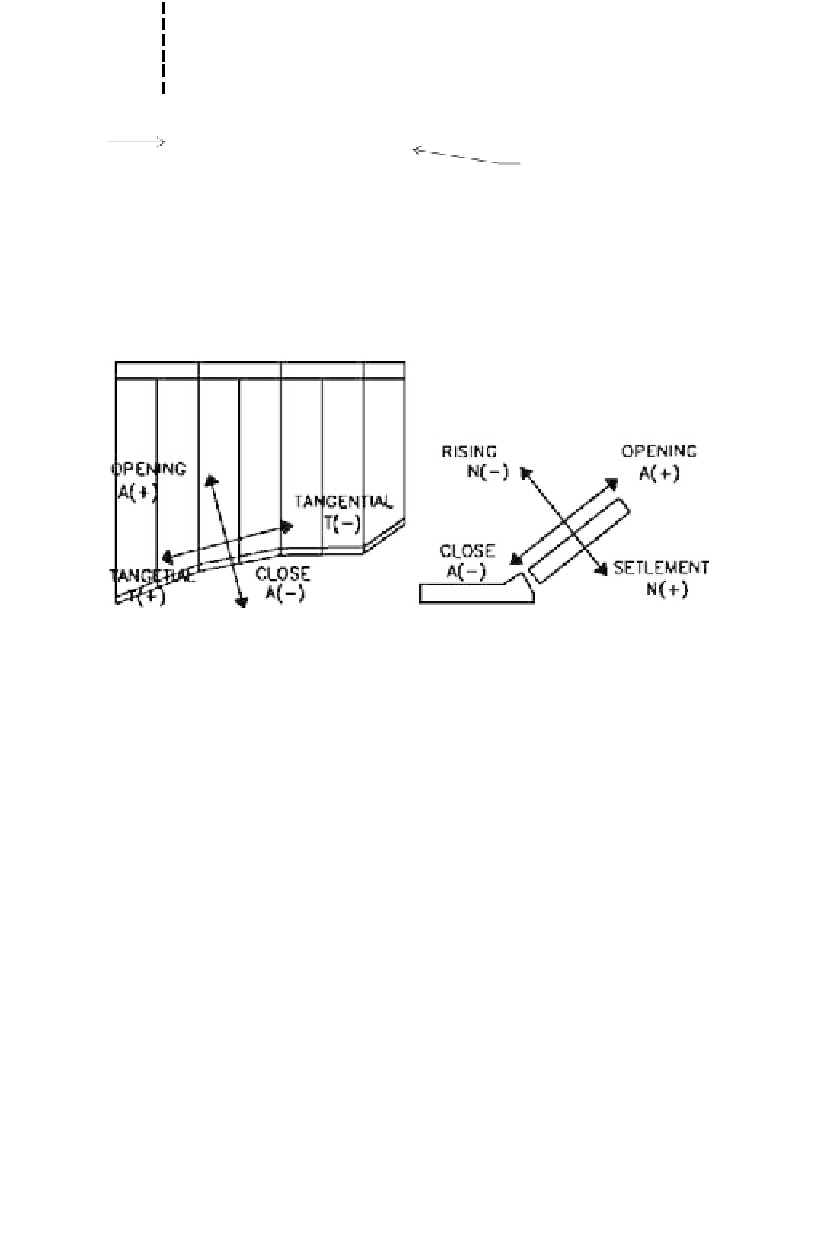Environmental Engineering Reference
In-Depth Information
In vertical
joints
Tension
Transit
ion
Compression
Transition
Tension
Plinth
Direction of movement
near perimetric joint
Figure 15.34.
Face slab elevation showing movement directions and stress zones.
Figure 15.35.
Direction of movements at the perimetric joint (Gomez, 1999).
15.6.2
Post construction crest settlement
Available methods (Sowers et al., 1965; Parkin, 1977; Soydemir and Kjaernsli, 1979; Clements,
1984; Pinto and Filho Marques, 1985; Sherard and Cooke, 1987; Hunter, 2003; Hunter and
Fell, 2002) for prediction of post-construction crest settlement or rockfill embankments are
empirical and are generally based on historical records of similar embankment types and sim-
ilar methods of construction.
An important aspect of the deformation behaviour of rockfill related to its stress-strain
characteristics is that relatively large deformations occur on application of stresses above those
not previously experienced by the rockfill (such as on first filling or embankment raising). On
un-loading or re-loading to stress states less than those previously experienced (such as due to
fluctuations in the reservoir level) the rockfill modulus is very high and resultant deformation
limited. Collapse deformation on initial wetting can result in relatively large deformations.
Considerations for the post-construction deformation of rockfill in CFRDs therefore include:
-Events where stresses are likely to exceed those previously experienced, most notably first
filling;
- Ongoing, time-dependent (or creep) deformation of rockfill;
- Collapse type deformations due to wetting from leakage or tail-water impoundment.
A significant factor in using empirical methods for prediction is assessment of the base
time of deformation and consideration of the timing of events such as first filling. If near


























